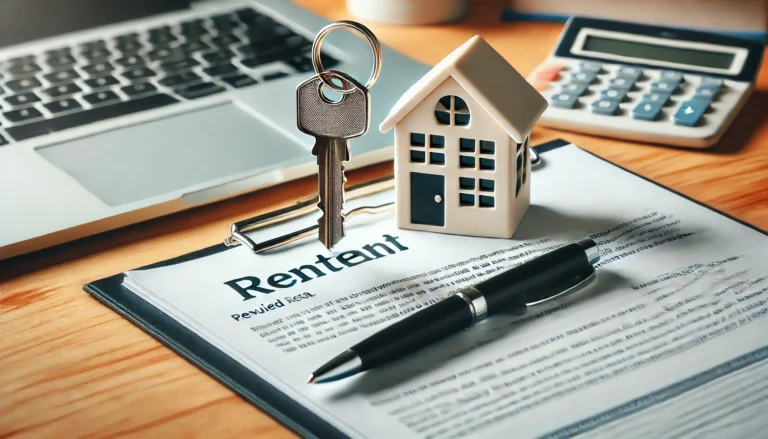How to Set Up Utilities in Your New Home
How to Set Up Utilities in Your New Home: A Step-by-Step Guide
Moving into a new home is an exciting journey, but setting up utilities can feel overwhelming. This step-by-step guide will walk you through the process of establishing essential services such as electricity, water, gas, internet, and cable in your new residence. Proper planning can make the transition smoother and ensure you have everything you need from day one.
Understanding Utility Services
Before diving into the setup process, it’s essential to understand what utility services are and why they matter. Utilities typically include:
- Electricity: Powers your home, providing lighting, heating, and cooling.
- Water: Essential for drinking, cooking, cleaning, and sanitation.
- Gas: Used for heating and cooking in many homes.
- Internet: Connects you to the online world for work, communication, and entertainment.
- Cable or Satellite TV: Provides entertainment and news.
Why Setting Up Utilities Is Important
- Comfort: Reliable utilities ensure a comfortable living environment.
- Functionality: Essential services allow your household to operate smoothly.
- Safety: Properly functioning utilities, especially gas and electricity, are crucial for safety.
Step 1: Gather Necessary Information
Before reaching out to utility providers, gather the following information to streamline the process:
- Personal Information:
- Full name
- Social Security number (may be required for credit checks)
- Date of birth
- Address Details:
- New home address
- Move-in date
- Previous Utility Information:
- Account numbers from your previous utilities (if applicable)
- Contact information for your former utility providers
- Payment Method:
- Bank account information (for direct debit)
- Credit card information (for one-time payments)
Step 2: Identify Utility Providers
Research the utility providers available in your area. This may vary by location, especially for electricity and gas. Check local government websites or utility company websites for comprehensive lists. Consider the following types of providers:
Electricity Providers
- Major electric companies often operate regionally. Examples include:
- Pacific Gas and Electric (PG&E) – California
- Florida Power & Light (FPL) – Florida
- Con Edison – New York
Water and Sewer Services
- Usually provided by municipal water departments, but some areas may have private companies. Check with local city or county offices.
Gas Providers
- Commonly provided by the same companies as electricity or separate gas companies. Look for local providers like:
- Atmos Energy
- Dominion Energy
Internet and Cable Providers
- Options may include national providers and local ISPs. Examples are:
- Comcast Xfinity
- AT&T
- Verizon Fios
- Charter Spectrum
Telephone Providers
- Traditional landlines are less common, but providers include:
- AT&T
- Verizon
Step 3: Set Up Electricity and Gas Services
Contact Utility Providers
Once you’ve identified your local providers, contact them to initiate service. You can typically do this via phone, online, or in-person. Here’s what you need to do:
- Choose Service Start Date: Make sure it aligns with your move-in date.
- Provide Necessary Information: Give them the gathered information to set up your account.
- Inquire About Deposits: Some providers require a security deposit, especially for first-time customers.
- Schedule an Appointment: If needed, schedule an appointment for meter installation or inspection.
Confirming Service
Once your electricity and gas services are set up, confirm the details:
- Account Number: Keep this handy for future payments or inquiries.
- Billing Cycle: Understand when bills will arrive and due dates.
- Emergency Contact Numbers: Save important numbers for outages or issues.
Step 4: Set Up Water and Sewer Services
Contact Local Water Authority
- Find the Local Water Authority: Visit your city or county’s website to find contact information.
- Provide Required Details: Similar to electricity and gas, provide necessary personal and property information.
- Establish Service: Confirm the service start date, billing cycle, and any deposits required.
Confirming Water Services
- Ensure your water service is functioning before moving in.
- Check for any visible leaks or issues upon arrival.
Step 5: Set Up Internet and Cable Services
Research Providers
Look for internet and cable providers available in your area. Consider the following:
- Speeds: Choose a plan that fits your needs, whether for work or streaming.
- Bundles: Many providers offer bundles for internet, cable, and phone services, which may save you money.
Contact the Provider
- Choose Your Package: Decide on the internet and cable package that meets your needs.
- Schedule Installation: Most providers require an installation appointment.
- Set Up Payment: Understand the billing cycle and set up automatic payments if possible.
Confirming Internet and Cable Services
- Test the internet connection and cable service once set up.
- Ensure you have all necessary equipment, such as modems and routers.
Step 6: Set Up Telephone Services (if needed)
If you require a landline:
- Contact Local Providers: Reach out to providers for plans and pricing.
- Provide Necessary Information: As with other utilities, you’ll need to provide personal and address details.
- Schedule Installation: Arrange for an installation date if required.
Step 7: Review Your Utility Accounts
Once all utilities are set up, take time to review your accounts:
- Confirm Account Numbers: Write them down for future reference.
- Understand Billing Cycles: Be aware of when payments are due.
- Familiarize Yourself with Payment Options: Many utilities offer online billing, auto-pay, and budget plans.
Step 8: Monitor Your Utility Usage
After moving in, monitor your utility usage to identify patterns and areas for savings. Here are some tips:
- Set Energy-Saving Goals: Implement measures to reduce energy consumption.
- Track Water Usage: Check for leaks and monitor your water bill.
- Review Internet Data: Ensure you’re not exceeding data limits on your plan.
Frequently Asked Questions
1. How long does it take to set up utilities?
The setup time can vary. Generally, it takes a few days to a couple of weeks, depending on the provider and whether installation is required.
2. Can I set up utilities before I move in?
Yes, it’s advisable to set up utilities a few days before your move-in date to ensure everything is functioning upon arrival.
3. What should I do if I have trouble with a utility provider?
Contact the provider’s customer service for assistance. Keep a record of your communications for reference.
4. Are there any fees associated with setting up utilities?
Many providers charge setup or connection fees. Be sure to ask about any fees when establishing service.
5. How can I save on utility costs?
- Use energy-efficient appliances.
- Implement smart home technology to monitor usage.
- Compare utility rates and shop around for better deals.
Conclusion
Setting up utilities in your new home doesn’t have to be a daunting task. By following this step-by-step guide, you can ensure that your essential services are ready when you move in. From gathering the necessary information to understanding your options, each step will contribute to a smoother transition. Don’t forget to monitor your usage and look for ways to save on utility costs, enhancing your new living experience.
For additional information on utility providers, you can visit resources like EnergySage for electricity and FCC for internet services.




